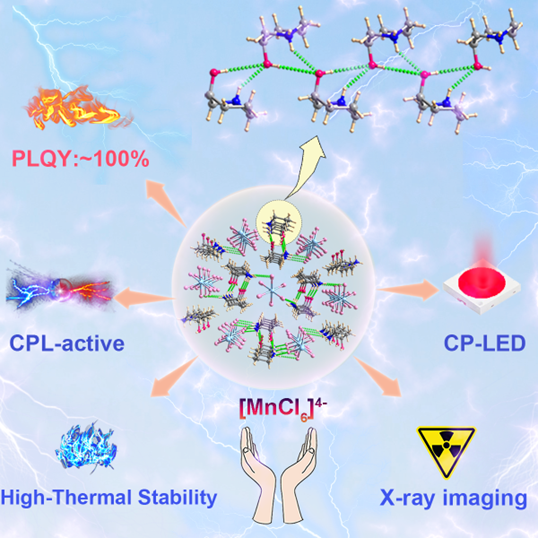Recently, The team of Professor Pang Qi from SKL is entitled "Circularly Polarized Luminescence Induced by Hydrogen-Bonding Networks in a One-Dimensional Hybrid Manganese(II) Chloride" was published in the Angewandte Chemie International Edition.

Chiral hybrid metal halides hold great potential as circularly polarized luminescence light sources. Herein, we have obtained two enantiomeric pairs of one-dimensional hybrid chiral manganese(II) chloride single crystals,R/S-(3-methyl piperidine)MnCl3(R/S-1) andR/S-(3-hydroxy piperidine)MnCl3(R/S-2), crystallizing in the non-centrosymmetric space group P212121. In comparison toR/S-1,R/S-2 single crystals not only show red emission with near-unity photoluminescence quantum yield (PLQY) and high resistance to thermal quenching but also exhibit circularly polarized luminescence with an asymmetry factor (glum) of 2.5×10−3, which can be attributed to the enhanced crystal rigidity resulting from the hydrogen bonding networks betweenR/S-(3-hydroxy piperidine) cations and [MnCl6]4−chains. The circularly polarized luminescence activities originate from the asymmetric [MnCl6]4−luminophores induced by N−H⋅⋅⋅Cl hydrogen bonding withR/S-(3-hydroxy piperidine). Moreover, these samples demonstrate great application potential in circularly polarized light-emitting diodes and X-ray scintillators. This work shows a highly efficient photoluminescent Mn-based halide and offers a strategy for designing multifunctional chiral metal halides.